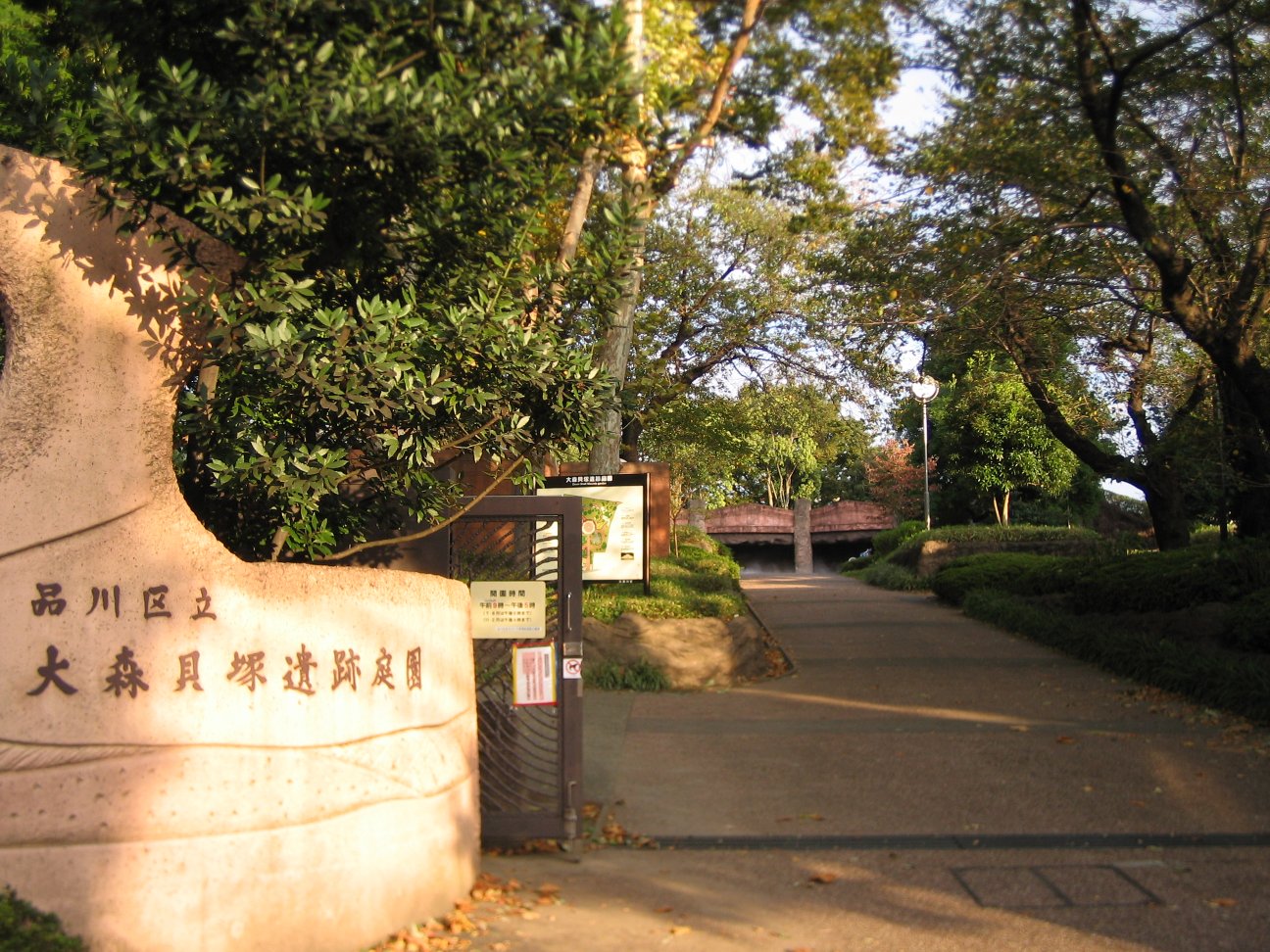Omori Shell Mounds on:
[Wikipedia]
[Google]
[Amazon]


 The Ōmori Shell Mounds () are the
The Ōmori Shell Mounds () are the
Omori Shell Mounds (Live Japan)
/ref>
The Omori Shellmounds (Shinagawa Historical Museum)
{{Authority control Shell middens in Japan Shinagawa Tourist attractions in Tokyo


 The Ōmori Shell Mounds () are the
The Ōmori Shell Mounds () are the middens
A midden (also kitchen midden or shell heap) is an old dump for domestic waste which may consist of animal bone, human excrement, botanical material, mollusc shells, potsherds, lithics (especially debitage), and other artifacts and ecofac ...
, located in Ōmori
is a district located a few kilometres south of Shinagawa, Tokyo, Japan accessed by rail via the Keihin Tohoku line, or by road via Dai Ichi Keihin. Ōmorikaigan, the eastern area of Ōmori, can be reached via the Keikyu line.
Ōmori is one o ...
, on the border of Shinagawa
is a special ward in Tokyo, Japan. The Ward refers to itself as Shinagawa City in English. The Ward is home to ten embassies.
, the Ward had an estimated population of 380,293 and a population density of 16,510 persons per km2. The total are ...
and Ōta, Tokyo
Tokyo (; ja, 東京, , ), officially the Tokyo Metropolis ( ja, 東京都, label=none, ), is the capital and largest city of Japan. Formerly known as Edo, its metropolitan area () is the most populous in the world, with an estimated 37.468 ...
, Japan
Japan ( ja, 日本, or , and formally , ''Nihonkoku'') is an island country in East Asia. It is situated in the northwest Pacific Ocean, and is bordered on the west by the Sea of Japan, while extending from the Sea of Okhotsk in the north ...
.
Overview
The shell mounds had been known to the local people for a long time. In 1877, the Americanzoologist
Zoology ()The pronunciation of zoology as is usually regarded as nonstandard, though it is not uncommon. is the branch of biology that studies the Animal, animal kingdom, including the anatomy, structure, embryology, evolution, Biological clas ...
Edward S. Morse
Edward Sylvester Morse (June 18, 1838 – December 20, 1925) was an American zoologist, archaeologist, and oriental studies, orientalist. He is considered the "Father of Japanese archaeology."
Early life
Morse was born in Portland, Maine, ...
(who would later teach zoology at the University of Tokyo
, abbreviated as or UTokyo, is a public research university located in Bunkyō, Tokyo, Japan. Established in 1877, the university was the first Imperial University and is currently a Top Type university of the Top Global University Project by ...
) came to Japan, and, on the second day of his arrival while riding Japan's first railway from Yokohama
is the second-largest city in Japan by population and the most populous municipality of Japan. It is the capital city and the most populous city in Kanagawa Prefecture, with a 2020 population of 3.8 million. It lies on Tokyo Bay, south of To ...
to Tokyo (founded in 1872), "found" these mounds and instantly felt their importance.
Dr. Morse with his assistants later excavated these mounds from the Jōmon Period
The is the time in Japanese history, traditionally dated between 6,000–300 BCE, during which Japan was inhabited by a diverse hunter-gatherer and early agriculturalist population united through a common Jōmon culture, which reached a c ...
and published his paper in 1879, which launched Japan's modern archeology
Archaeology or archeology is the scientific study of human activity through the recovery and analysis of material culture. The archaeological record consists of artifacts, architecture, biofacts or ecofacts, sites, and cultural landscap ...
.
These shell mounds are now part of Ōmori Shell Mounds Garden, open to the public. In 1955, the sites were registered as Japan's Historic Sites
History (derived ) is the systematic study and the documentation of the human activity. The time period of event before the invention of writing systems is considered prehistory. "History" is an umbrella term comprising past events as well ...
. The shells, pottery, and other items that Dr. Morse excavated are mostly stored at the University Museum of the University of Tokyo and are Japan's Important Cultural Property.
Transportation
The Ōmori Shell Mounds are located within five-minutes' walk from the north entrance of Ōmori Railway Station of the JR Keihin–Tōhoku Line./ref>
See also
*Jōmon period
The is the time in Japanese history, traditionally dated between 6,000–300 BCE, during which Japan was inhabited by a diverse hunter-gatherer and early agriculturalist population united through a common Jōmon culture, which reached a c ...
References
External links
The Omori Shellmounds (Shinagawa Historical Museum)
{{Authority control Shell middens in Japan Shinagawa Tourist attractions in Tokyo